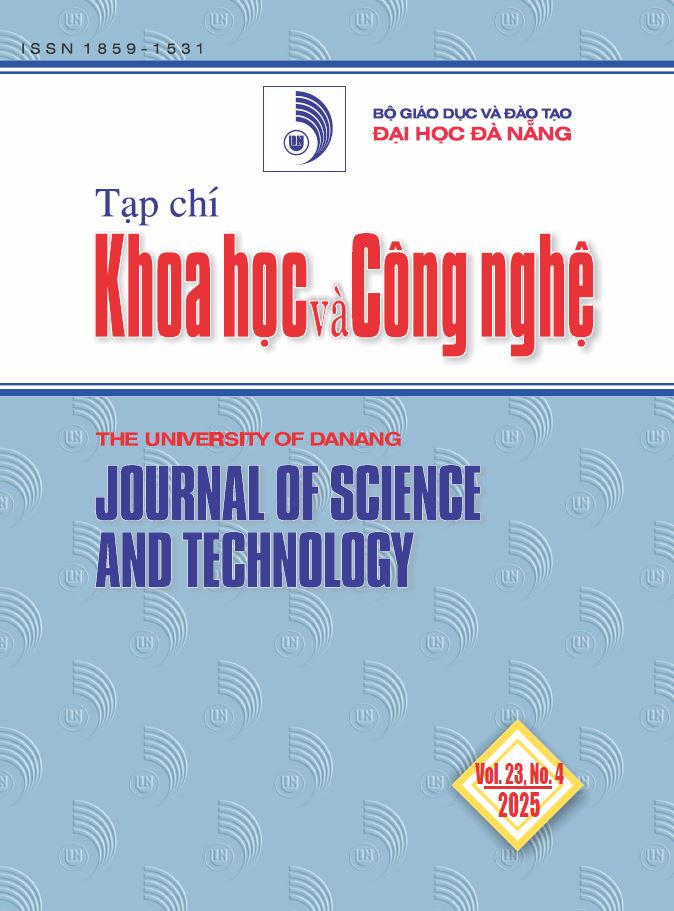Ảnh hưởng của hàng không giá rẻ đến nhu cầu du lịch quốc tế - nghiên cứu tại các nước Asean
 Tóm tắt: 375
Tóm tắt: 375
 |
|  PDF: 263
PDF: 263 
##plugins.themes.academic_pro.article.main##
Author
-
Huynh Thi Dieu LinhThe University of Danang - University of Economics, VietnamLe Thi Thanh TrucThe University of Danang - University of Economics, VietnamNguyen Phuong NhiThe University of Danang - University of Economics, VietnamDoan Thi Tuong VyThe University of Danang - University of Economics, VietnamNgo Cong MinhThe University of Danang - University of Economics, Vietnam
Từ khóa:
Tóm tắt
Trong những năm gần đây, sự gia tăng của các hãng hàng không giá rẻ (LCC) ở ASEAN sau khi bãi bỏ quy định và tự do hóa trong lĩnh vực hàng không, đã tác động đáng kể đến ngành du lịch khu vực. Nghiên cứu này nhằm phân tích mối quan hệ giữa sự mở rộng của các hãng hàng không giá rẻ và nhu cầu du lịch quốc tế, đồng thời xác định các yếu tố chính ảnh hưởng đến cầu du lịch tại các quốc gia ASEAN. Bằng cách sử dụng dữ liệu bảng từ bảy quốc gia thành viên ASEAN trong giai đoạn 2010–2022, nghiên cứu tiến hành phân tích thông qua mô hình hồi quy. Kết quả nghiên cứu cho thấy, mối tương quan tích cực giữa sự mở rộng của các hãng hàng không giá rẻ đến cầu du lịch quốc tế. Ngoài ra, GDP, tỷ giá hối đoái, số lượng phòng và COVID-19 có tác động đáng kể đến Cầu du lịch quốc tế của ASEAN. Dựa trên những phát hiện này, nhóm tác giả đề xuất một số khuyến nghị để phát triển du lịch khu vực trong tương lai.
Tài liệu tham khảo
-
[1] Pulina and I. Cortés-Jiménez, "Have low-cost carriers influenced tourism demand and supply? The case of Alghero, Italy”, Tourism Analysis, vol. 15, no. 6, pp. 617-635, 2010.
[2] Lai, H. Jang, C. Xu, and S. Xin, "The impact of low-cost carriers on inbound tourism of Thailand”, International Journal of Supply Chain Management, vol. 8, no. 3, pp. 846-853, 2019.
[3] Habibi, "The determinants of inbound tourism to Malaysia: a panel data analysis”, Current Issues in Tourism, vol. 20, no. 9, pp. 909-930, 2017.
[4] Song, G. Li, S. F. Witt, and B. Fei, "Tourism demand modelling and forecasting: how should demand be measured?”, Tourism economics, vol. 16, no. 1, pp. 63-81, 2010.
[5] I. Crouch, "The study of international tourism demand: A survey of practice”, Journal of Travel research, vol. 32, no. 4, pp. 41-55, 1994.
[6] Lim, "Review of international tourism demand models”, Annals of tourism research, vol. 24, no. 4, pp. 835-849, 1997.
[7] Li, H. Song, and S. F. Witt, "Recent developments in econometric modeling and forecasting”, Journal of travel Research, vol. 44, no. 1, pp. 82-99, 2005.
[8] Y. Chung and T. Whang, "The impact of low cost carriers on Korean Island tourism”, Journal of Transport Geography, vol. 19, no. 6, pp. 1335-1340, 2011.
[9] Santos and M. Cincera, "Tourism demand, low cost carriers and European institutions: The case of Brussels”, Journal of transport geography, vol. 73, pp. 163-171, 2018.
[10] M. Costas-Centivany, "Spain's airport infrastructure: adaptations to liberalization and privatization”, Journal of Transport Geography, vol. 7, no. 3, pp. 215-223, 1999.
[11] Aguiló, B. Rey, J. Rosselló, and C. M. Torres, "The impact of the post-liberalisation growth of LCCs on the tourism trends in Spain”, Rivista di Politica Economica, vol. 97, no. 1/2, p. 39, 2007.
[12] Donzelli, "The effect of low-cost air transportation on the local economy: Evidence from Southern Italy”, Journal of Air Transport Management, vol. 16, no. 3, pp. 121-126, 2010.
[13] H. Hassan and A. E. Salem, "Impact of service quality of low-cost carriers on airline image and consumers’ satisfaction and loyalty during the COVID-19 outbreak”, International journal of environmental research and public health, vol. 19, no. 1, p. 83, 2021.
[14] I. Castillo-Manzano and L. Lopez-Valpuesta, "Can LCCs’ economic efficiency create negative externalities for air transport? An analysis of passenger waiting time”, Applied Economics Letters, vol. 21, no. 13, pp. 878-881, 2014.
[15] C. Law, Y. Zhang, and A. Zhang, "Regulatory changes in international air transport and their impact on tourism development in Asia Pacific”, Airline economics in Asia, vol. 7, pp. 123-144, 2018.
[16] Alsumairi and K. W. H. Tsui, "A case study: The impact of low-cost carriers on inbound tourism of Saudi Arabia”, Journal of Air Transport Management, vol. 62, pp. 129-145, 2017.
[17] Graham and N. Dennis, "The impact of low cost airline operations to Malta”, Journal of Air Transport Management, vol. 16, no. 3, pp. 127-136, 2010.
[18] Rey, R. L. Myro, and A. Galera, "Effect of low-cost airlines on tourism in Spain. A dynamic panel data model”, Journal of Air Transport Management, vol. 17, no. 3, pp. 163-167, 2011.
[19] Xie and S. Tveterås, "Economic decline and the birth of a tourist nation”, Scandinavian Journal of Hospitality and Tourism, vol. 20, no. 1, pp. 49-67, 2020.
[20] Irandoust, "On the relation between exchange rates and tourism demand: A nonlinear and asymmetric analysis”, The Journal of Economic Asymmetries, vol. 20, p. e00123, 2019.
[21] M. M. Uner, N. Kose, and S. Gokten, "An econometric model of tourism demand and room rates: A study in Belek, Antalya”, Anatolia, vol. 19, no. 1, pp. 41-50, 2008.



